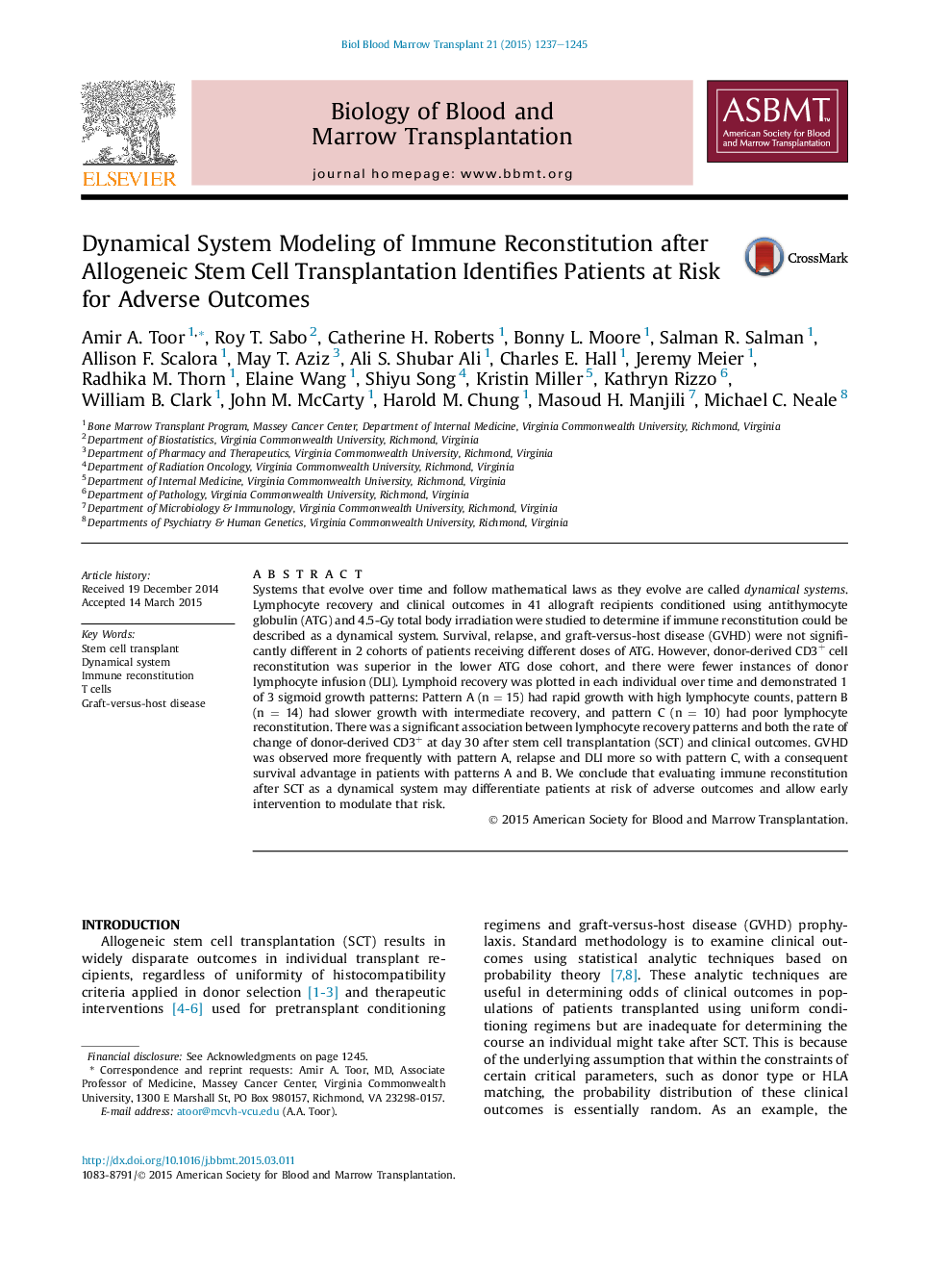| کد مقاله | کد نشریه | سال انتشار | مقاله انگلیسی | نسخه تمام متن |
|---|---|---|---|---|
| 2102248 | 1546265 | 2015 | 9 صفحه PDF | دانلود رایگان |
• Immune reconstitution following SCT can be modeled as a logistic dynamical system.
• Magnitude and rate of lymphoid reconstitution over time correlates with outcomes.
• Rate of early T cell expansion influences lymphoid recovery and GVHD likelihood.
• Considering T cell recovery rates, SCT outcomes may be deterministic not stochastic.
Systems that evolve over time and follow mathematical laws as they evolve are called dynamical systems. Lymphocyte recovery and clinical outcomes in 41 allograft recipients conditioned using antithymocyte globulin (ATG) and 4.5-Gy total body irradiation were studied to determine if immune reconstitution could be described as a dynamical system. Survival, relapse, and graft-versus-host disease (GVHD) were not significantly different in 2 cohorts of patients receiving different doses of ATG. However, donor-derived CD3+ cell reconstitution was superior in the lower ATG dose cohort, and there were fewer instances of donor lymphocyte infusion (DLI). Lymphoid recovery was plotted in each individual over time and demonstrated 1 of 3 sigmoid growth patterns: Pattern A (n = 15) had rapid growth with high lymphocyte counts, pattern B (n = 14) had slower growth with intermediate recovery, and pattern C (n = 10) had poor lymphocyte reconstitution. There was a significant association between lymphocyte recovery patterns and both the rate of change of donor-derived CD3+ at day 30 after stem cell transplantation (SCT) and clinical outcomes. GVHD was observed more frequently with pattern A, relapse and DLI more so with pattern C, with a consequent survival advantage in patients with patterns A and B. We conclude that evaluating immune reconstitution after SCT as a dynamical system may differentiate patients at risk of adverse outcomes and allow early intervention to modulate that risk.
Graphical AbstractFigure optionsDownload high-quality image (149 K)Download as PowerPoint slide
Journal: - Volume 21, Issue 7, July 2015, Pages 1237–1245
